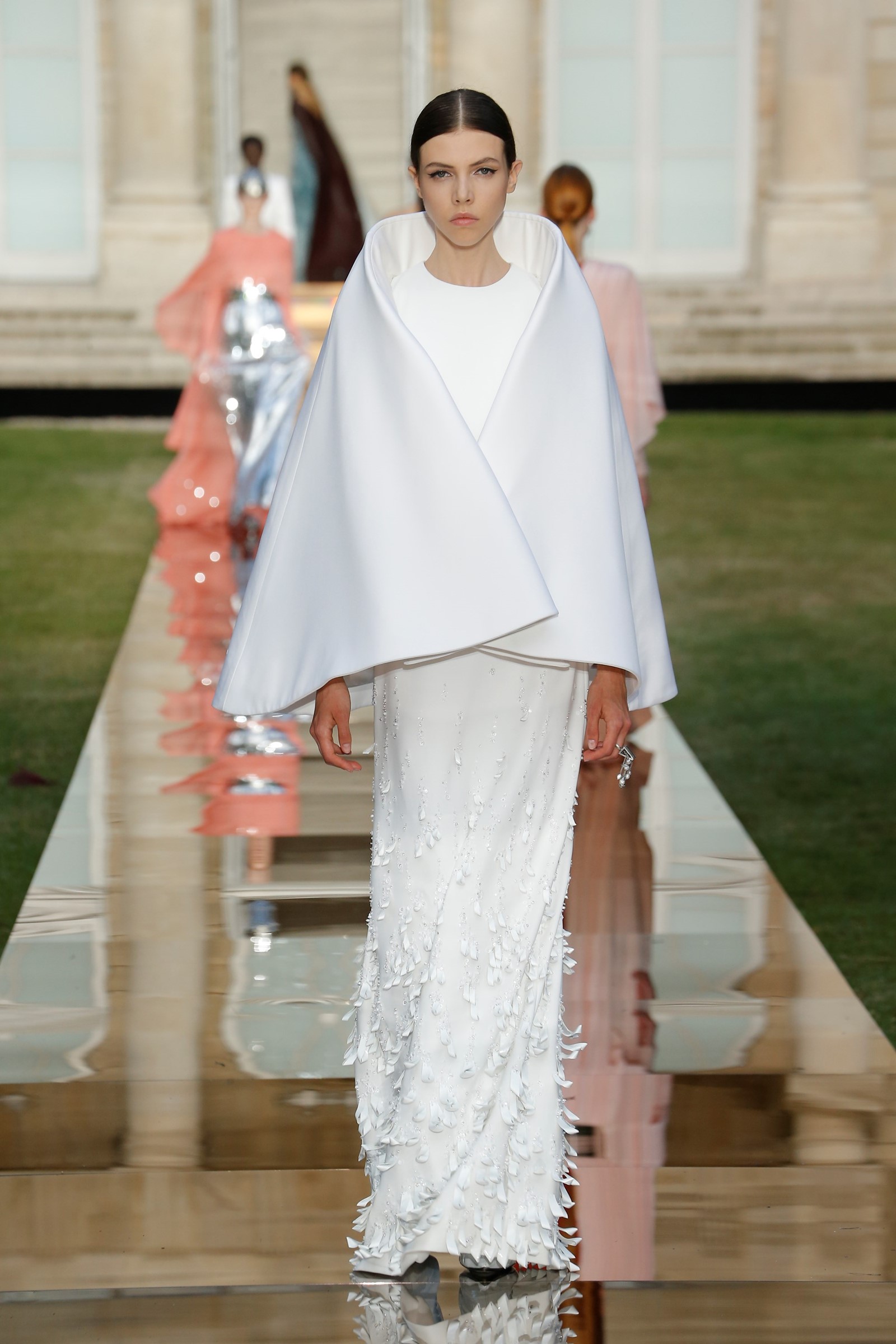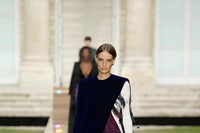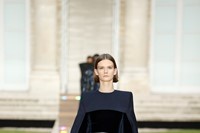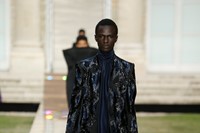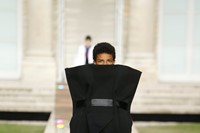The patrician and aristocratic Comte Hubert de Givenchy, founder of the house that still bears his name and inventor of the style of Audrey Hepburn (a woman who arguably vies only with Jacqueline Kennedy for the title of the 20th century’s best dressed), died in March, aged 91. For Clare Waight Keller, the only reaction was homage, to honour his memory and celebrate his work. Hence her Autumn/Winter 2018 Haute Couture collection, closing the first day of the Paris collections, was pitched as a tribute, underscoring the themes, ideas and simple elegance of his entire career. It was old and yet new, a dance between the present and the past.
Givenchy’s couture, luckily, still feels contemporary; founded in 1952, his couture house established its repute for a resoundingly youthful outlook. Givenchy was just 25 when he designed his first collection, and his clean lines and spare sense of elegance – owing a debt to Cristóbal Balenciaga, who Givenchy trickily considered himself both a disciple and a friend of – has a striking timelessness. Givenchy dresses from the 50s, 60s and 70s resonate with a verve even today – classically proportioned and flawlessly constructed, they have an eternal beauty. In 1968, when Balenciaga closed his doors to a clamour of consternation from clients, he lead them to Givenchy’s salons, literally passing his young friend his mantle (or, maybe more accurately, theirs). Many of his staff also moved to work with Givenchy, continuing a legacy of perfection that persists.
“Pure elegance and beauty” – Clare Waight Keller
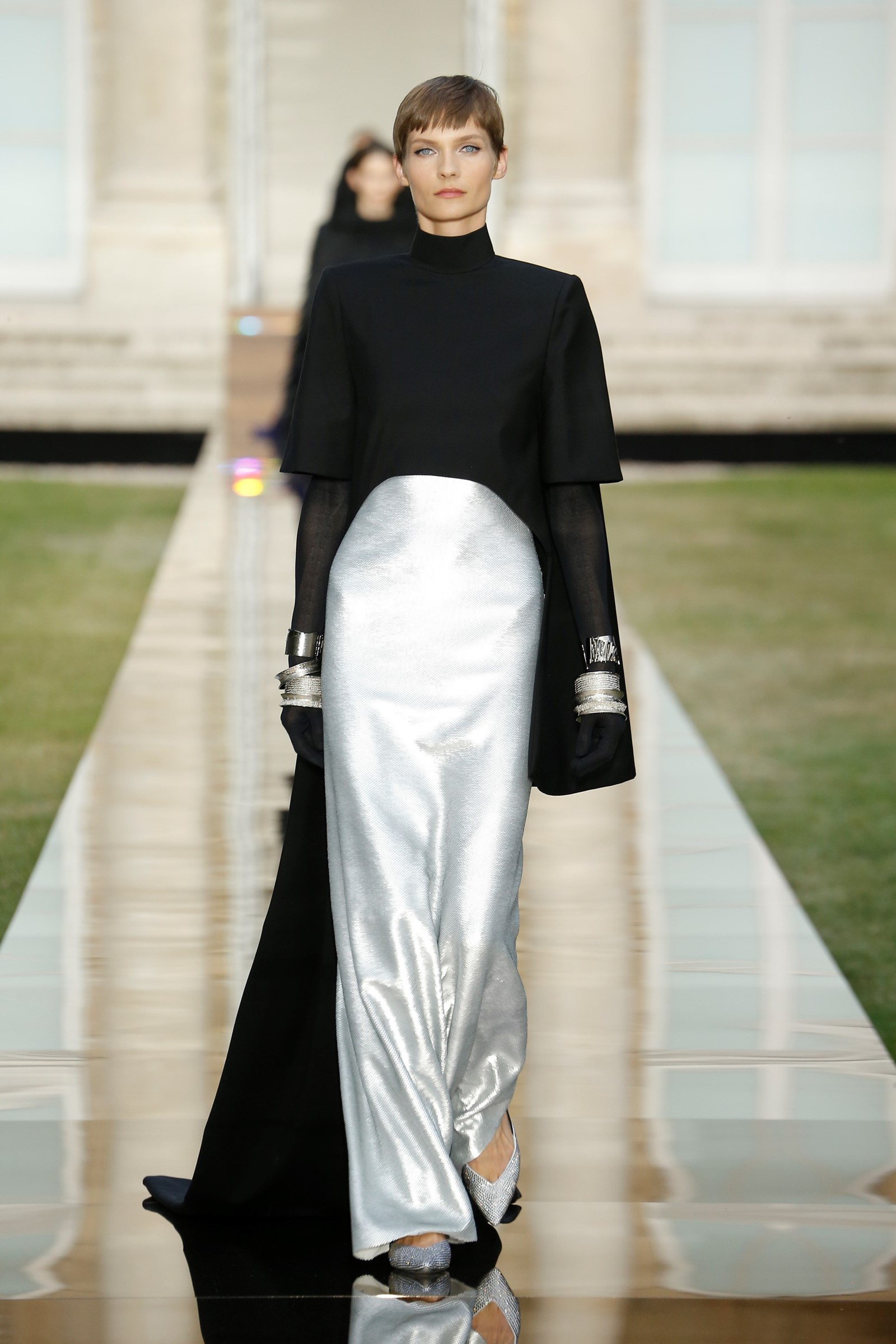
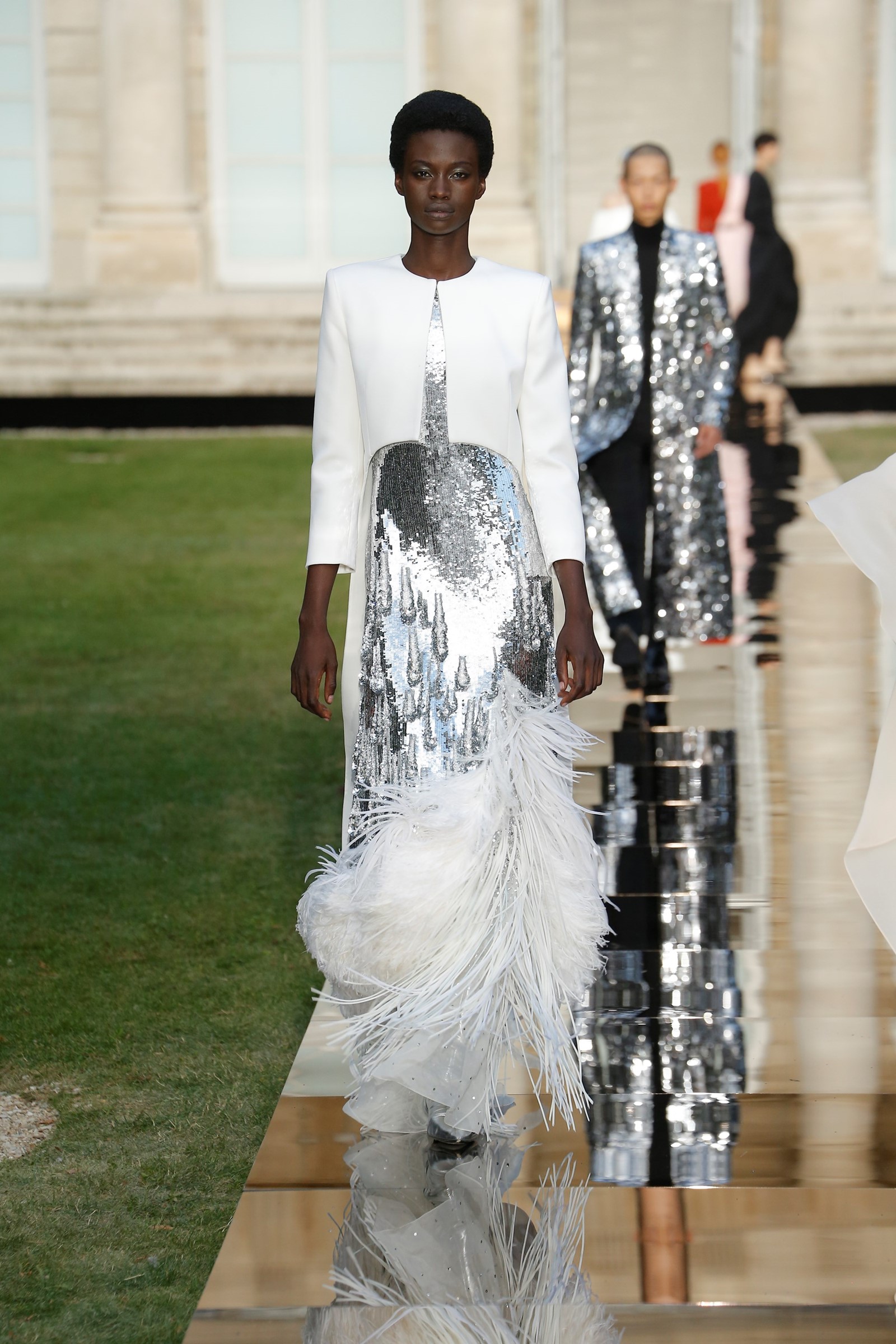
That’s fashion folklore that resonates little outside the industry, though. Luckily, Givenchy’s style also has touchstones that are easy to pick apart, known the world over – the ivory taffeta column topped with an abbreviated raspberry pink cape from Funny Face; the 1960 cutaway black dress, named ‘Audacious’ and worn by Hepburn in Breakfast at Tiffany’s; his crisp ruffled cotton ‘Bettina’ blouse of 1952, a breezy revolution in a stuffy couture universe peopled with strict suits.
Delving into that back catalogue unearths a goldmine that could easily become an albatross, but Waight Keller navigated it with aplomb, updating and revitalising, shifting the context of each. She titled this tribute collection Caraman – after the hôtel particulier on Avenue Georges V where Givenchy’s couture house was located from 1959, across the road from the salons of Balenciaga. But rather than show there, we were out back of the Archives Nationale in the Marais, in a garden flanked by a pale stone building with a striking resemblance to the 19th-century townhouse, a physical echo of the couture maison and an ideological nod to its own ‘archives’. Geddit?
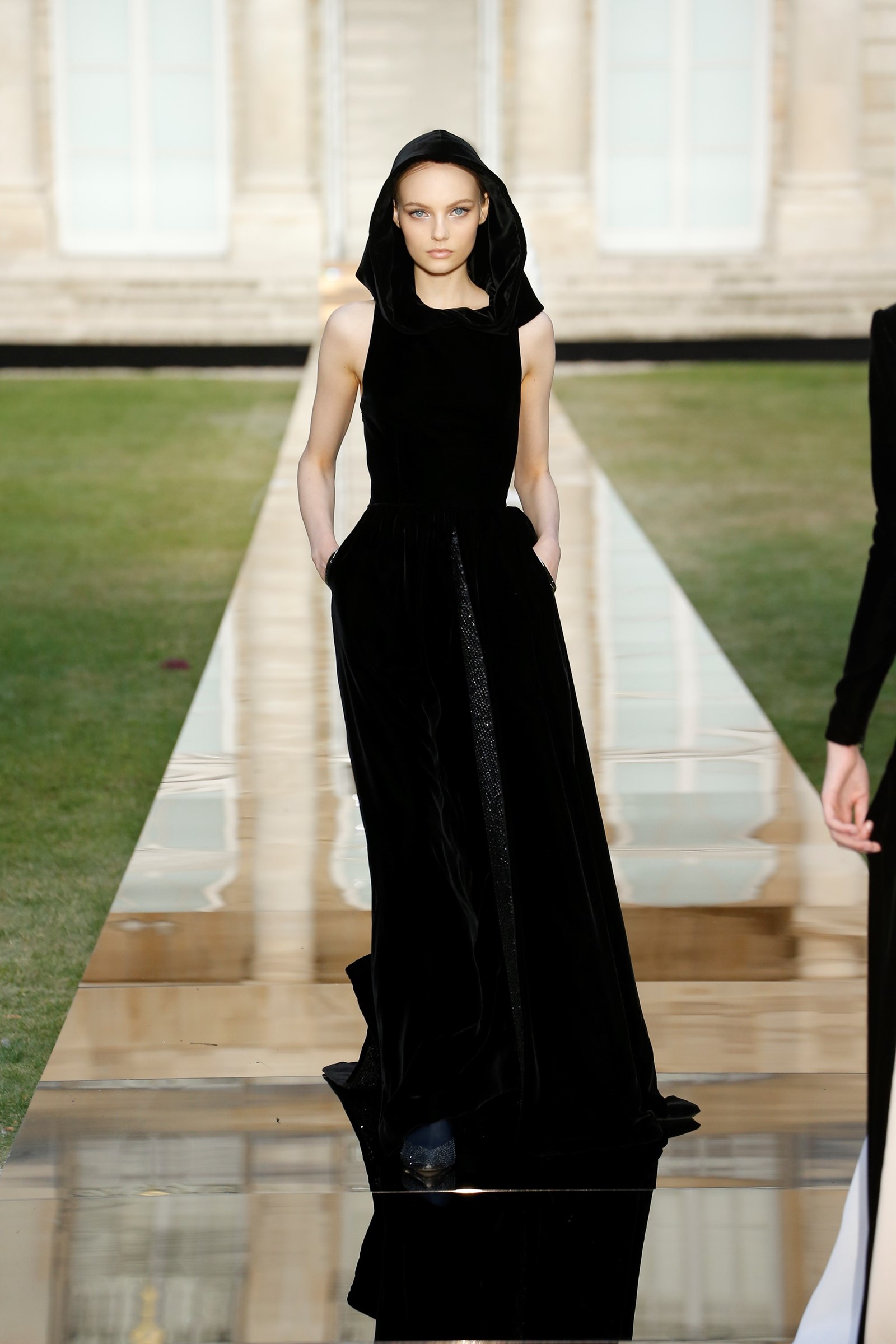
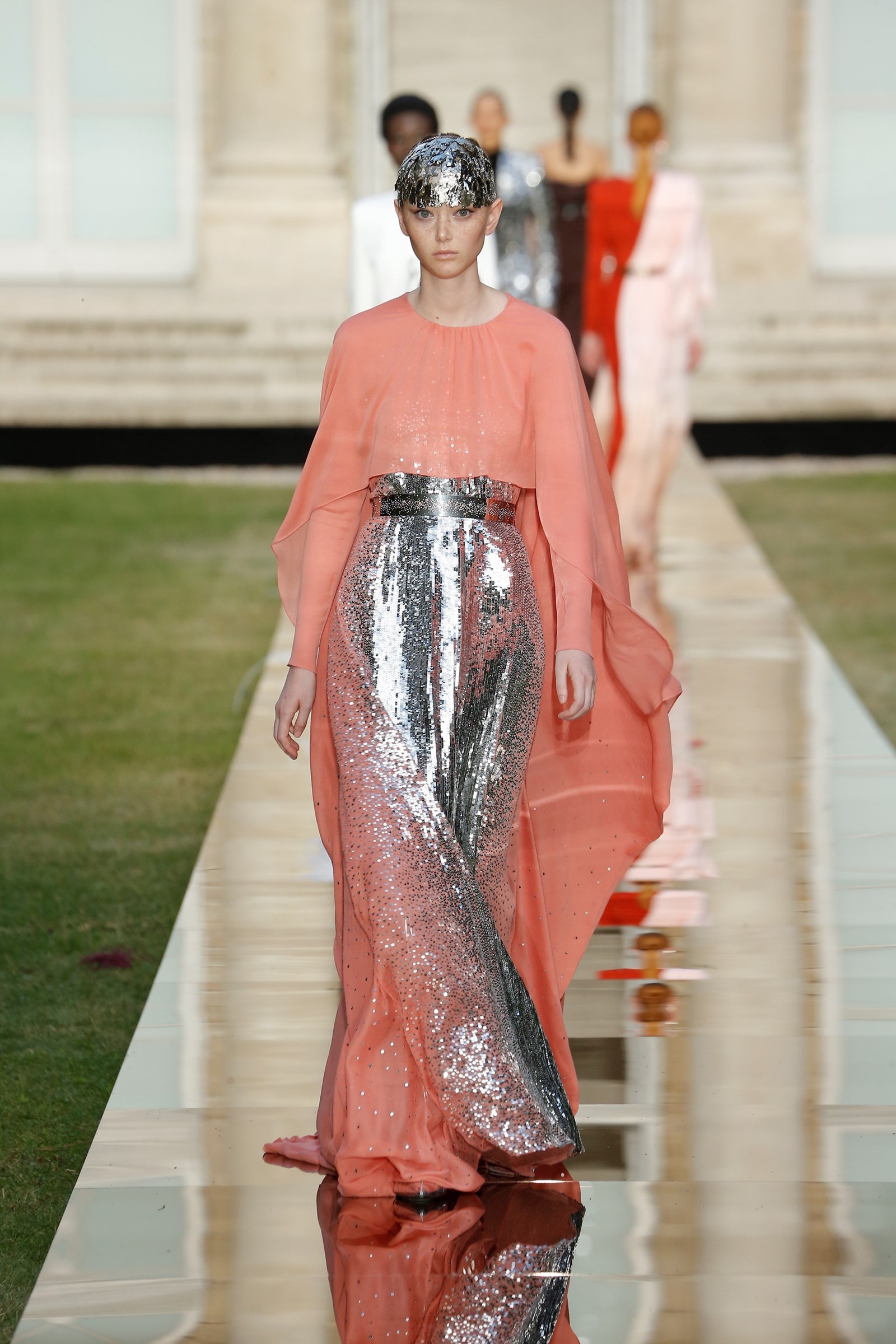
Waight Keller’s collection similarly recontextualised Givenchy’s codes and keys – the blouse, the little black dress, the short evening capes, the bubbled volumes and cocooning shapes that were Givenchy’s own tribute to his maître Balenciaga. They were exhumed and reactivated for the present, politely reverential but refusing to copy slavishly. In case you needed reminders, a small bound book on each seat reiterated a few greatest hits through the house’s own documentary photography and sketches in Monsieur de Givenchy’s own hand. But those were then, and this was now. Waight Keller’s Givenchy blouses were sensual drapes of georgette, easy above long, narrow embroidered leather skirts; her black dresses had surfaces that shimmered with embroidery and featherwork; a beaded evening dress was bottomed with black tuxedo trousers, as was an asymmetric feathered dress.
“Pure elegance and beauty,” Waight Keller pronounced, backstage, as both her inspiration and aim in creation of haute couture. They were also ideals Hubert de Givenchy both worked to, and lived by. What better tribute could there be at the house bearing his name?
